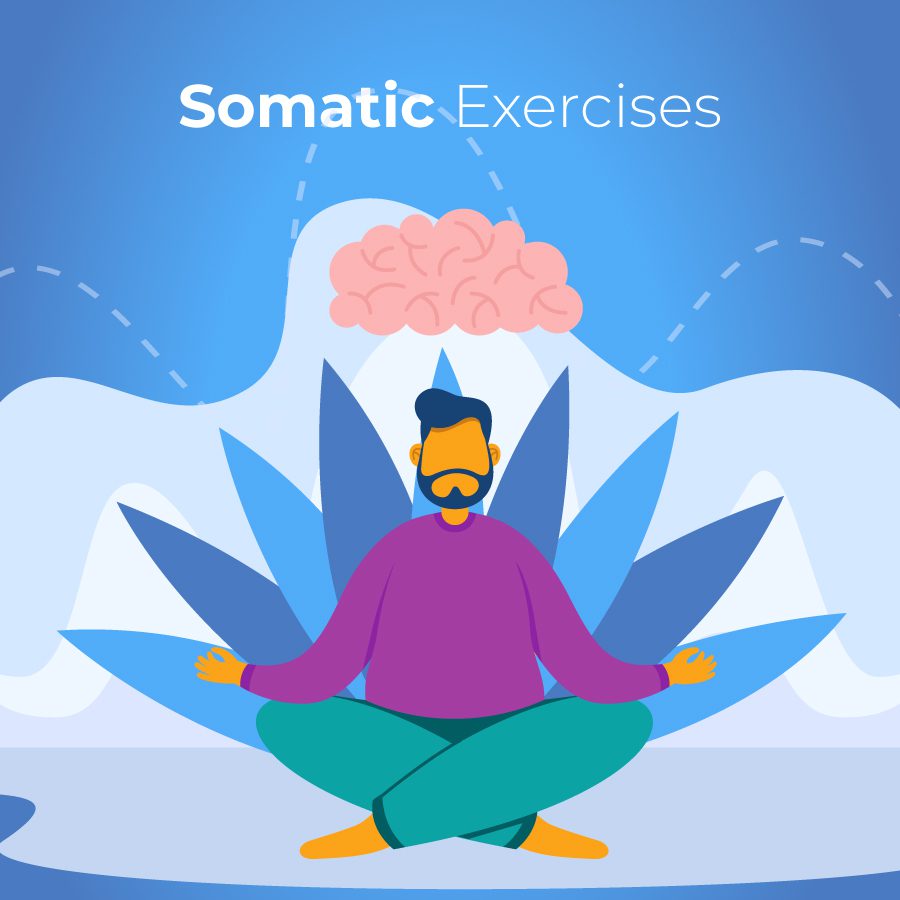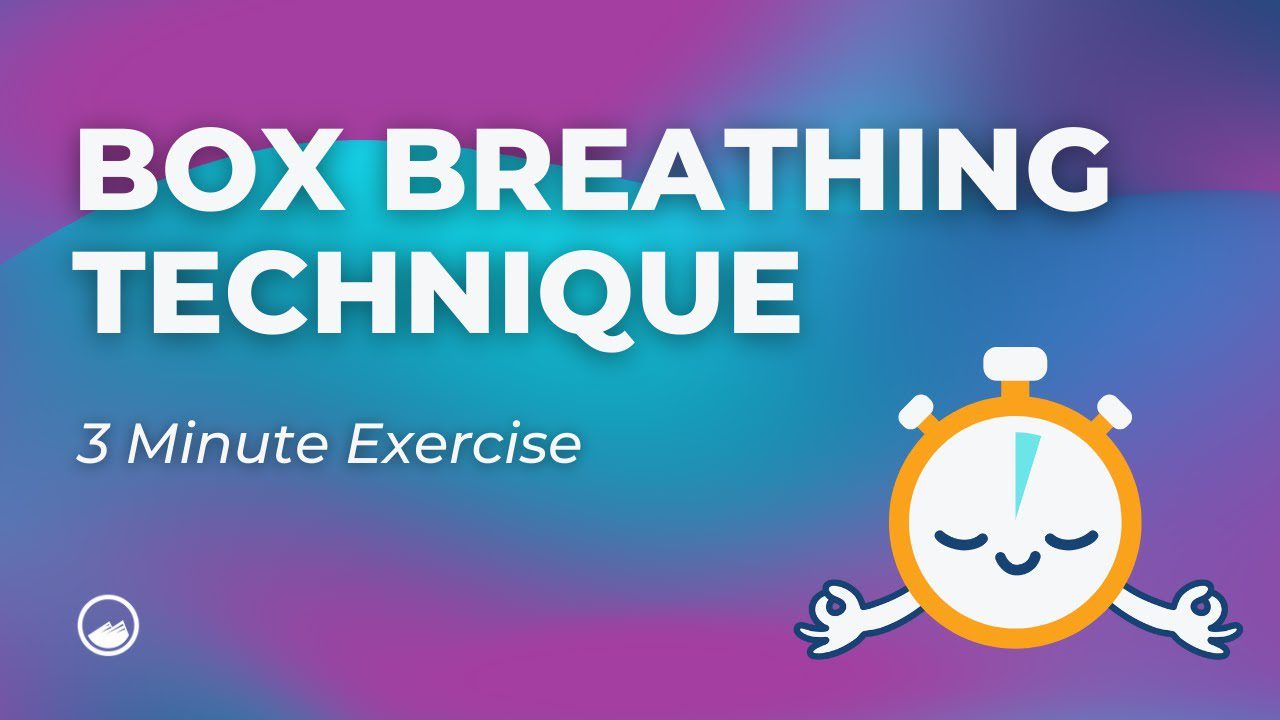Somatic Exercises
What Are Somatic Exercises?
Somatic exercises are movements that focus on your inner being and your body’s internal sensations instead of your overall fitness.
When many people work out, they do so because they want to improve their physical appearance by becoming stronger or more fit.
With somatic exercises, the focus is more on your mind-body connection, body awareness, and overall health.
The term “somatic” comes from the Greek word meaning body. Somatic exercises can be helpful for lots of therapeutic purposes, including managing stress and anxiety and healing from trauma.
These kinds of movements can also help increase your self-awareness and help you become more in touch with how your body feels from moment to moment.
If you think that somatic exercise could make a powerful difference in your life and want to learn how to get started, our team at Sandstone Care can help.
Do Somatic Exercises Work?
Yes, research has shown that somatic exercises can provide benefits for some people, especially those who are healing from past trauma and conditions like post-traumatic stress disorder (PTSD).
Research has also shown that somatic exercises may also be beneficial for those who are struggling with chronic pain.
Like with many other kinds of therapeutic methods, their effectiveness can vary from person to person.
While this form of exercise may have a lot of great benefits for one person, that doesn’t mean it will be effective for everyone.
It is important to identify your needs and work with a professional to help you create a therapeutic plan that will benefit you.
If you are struggling with PTSD and other trauma-related issues, this approach to care could be highly effective.
What Do Somatic Exercises Actually Do?
Somatic exercises use things like gentle movements and breathwork to help improve both mental health and physical health by helping ground you in the present moment.
Somatic practices can help improve symptoms of anxiety and depression, relieve chronic pain, and help reduce stress.
How Do I Start Somatic Exercise?
You can start with simple, mindful movements either with the guidance of a physical therapist, a somatic therapist, or completely on your own!
You don’t need any special equipment to start; you can begin from the comfort of your home.
Examples of somatic exercises like yoga or pilates can be done with or without a professional guiding you.
You can also find lots of free videos online that can walk you through beginner movements for each of these practices, which is great if you are wanting to work more on self-care in your daily life.
It’s important to start simple and not put too much pressure on yourself to do everything “correctly.” Instead, you want to focus on the present and how your body responds as you move.
For example, you can take deep breaths and focus on the bodily sensations you have in different areas, like your upper body or your lower back.
A healthcare professional can help you to make the best use of these exercises to combat things like anxiety or stress, but there is no harm in practicing on your own.
Make sure that you find a comfortable environment that is free from distraction and where you can relax and focus.
How Often Should You Do Somatic Exercises?
You can do somatic exercise as often as you want, whether it be daily or just occasionally, when you feel like you need it for stress relief or other benefits.
Once you’ve gotten the hang of somatic exercise and the way it works for you, you can create a routine and do it regularly if you want.
How Long Does It Take for Somatic Exercises to Work?
How long it takes to see results from doing somatic exercise varies from person to person.
Some people may notice some results during their first session. For other people, it may take weeks or even several months of regularly doing somatic exercise to determine if it’s working for them.
Benefits of Somatic Exercises
What Are the Benefits of Somatic Exercises?
Benefits of somatic exercises include pain relief, better body awareness, stress and anxiety reduction, and emotional awareness.
Everyone’s experience with somatic exercise can look a little different, and everyone may experience different results.
People may go into a session with different goals in mind, whether it be releasing muscle tension, healing from trauma, or just improving their mental health.
How Can Somatic Exercises Help Me Physically?
Somatic exercise can help you physically by improving flexibility and mobility, helping you improve your posture, and increasing your strength and stamina.
Regular exercise, even exercise that uses gentle movements like somatic exercise, can help you become more flexible.
This is done by reducing the tension in your muscles and joints. This can help you perform better athletically or just experience less pain during physical activity.
Somatic exercise can also help to improve symptoms of chronic pain, especially back pain and muscle tension.
This is why somatic exercises are often done during physical therapy for those who may be recovering from a muscle sprain or other injury.
Did you know that there are a lot of ways to improve your physical strength and stamina without doing typical things like weightlifting?
Somatic exercise may be focused on gentle movement, but it can still help you activate your core muscles and help you to build strength over time.
By stretching your body and moving muscles that you usually might not use, you can prevent injury in the future.
Because somatic exercise increases your body awareness, it can also help you to be more aware of when you may have a muscle strain developing. This way, you can treat that strain before a more serious injury occurs.
Finally, somatic exercise can physically help you by relieving your stress.
Physical health and mental health are very closely connected. The more you do to take care of your physical health, the better you’re going to feel mentally as well.
How Can Somatic Exercises Help Me Emotionally?
Somatic exercise can help you emotionally in many ways, increasing your self-awareness, relieving stress, and improving emotional regulation.
Many people might not realize how much their body reacts to stress and trauma. Often this trauma manifests itself in physical ways like pain or muscle aches and tension.
Somatic exercise can help you to be more aware of that trauma and learn how to release it.
Because somatic exercise requires you to slow down and be present, it can also help to ground you and stop panicking in difficult situations.
This can not only help improve your body-mind connection but can help you to be more aware of your own emotional needs.
When you become more aware of your emotional needs, it can help you to improve your emotional regulation. In other words, you may be better able to deal with stressful situations or negative emotions.
Somatic exercise can even help to improve your mood by releasing endorphins. Endorphins are feel-good chemicals that can help you feel happier and relieve stress.
Reasons for Somatic Exercises
Do Somatic Exercises Release Trauma?
Yes, somatic exercises can help some people to navigate trauma in a healthy way.
It can do this by helping a person become more aware of the connection between their mind and their body. From there, they can work on releasing that tension and finding relief.
What Are Somatic Exercises to Release Trauma?
Body scanning and mindful movement both use gentle movements that may help to release trauma.
Body scanning involves sitting quietly while mentally scanning your body from the top of your head all the way down to your toes. As you go, notice areas where you might be feeling pain or tension. These could be areas where you’re subconsciously storing trauma.
Mindful movement, which could include things like yoga or tai-chi, involves slow but intentional stretching.
Once you’ve identified the areas within your body where you might be storing trauma, you can use mindful movement to relieve it.
Mindful movement can also help you to reconnect with your body, especially after going through trauma.
Do Somatic Exercises Work for Anxiety?
There are somatic exercises for stress that can also help with relieving anxiety for many people.
When you’re feeling anxious, your body’s fight-or-flight is likely in full swing. Some of the physical sensations you may be experiencing as a result could be sweating, a racing heartbeat, quick breathing, and clammy hands.
Many of these symptoms can be reduced through somatic exercise.
This is because these kinds of slow but intentional movements can help calm your nervous system. This can, in turn, help to relieve stress and reduce the physical symptoms you associate with anxiety.
Somatic exercise can also help to relieve anxiety by encouraging you to focus on the present. When you’re feeling anxious, you may notice that your mind is racing and you’re constantly worrying about the future.
Your thoughts may quickly spiral out of control, causing you to panic even further.
However, through somatic exercise, you can increase your mindfulness and stop the spiral.
Through practices like grounding, you can focus on exactly where you are and what you’re feeling right at this exact moment.
Do Somatic Exercises Reduce Cortisol?
Yes, they can reduce the stress hormone cortisol for some people.
Cortisol is released when your fight or flight response is activated.
However, somatic exercise can help your central nervous system and relieve those anxious feelings that are often associated with that response.
This reduction of cortisol can have many important benefits on your mental and physical health.
Examples of Somatic Exercises
What Are Somatic Exercises Examples?
Somatic Experiencing, yoga, and grounding are some examples of somatic exercise.
Other examples include pilates and tai-chi.
What Is the Best Example of Somatic Work?
Somatic experience is one of the best examples of somatic work and is associated with many benefits.
Somatic experiencing can help you to release trauma and stress by focusing on your body’s physical sensations.
This type of therapy can be done on your own or with the help of a therapist. It can help to relieve stress and restore balance within your nervous system.
How to Practice Somatic Experiencing?
You can practice somatic experiencing in lots of different ways, from yoga to somatic stretching exercises.
Yoga uses things like breathwork, meditation, and mindful movement to help you become more aware of where you store tension.
From there, you can work on relieving that tension and stress.
Mindful movement can help in the same way by helping to reduce physical symptoms that may have been caused by trauma.
Are Somatic Exercises the Same as Yoga?
Yoga is one example of a somatic exercise, but other somatic movements can also be used for emotional benefits.
What Is Somatic Stretching?
Somatic stretching can help you to use gentle movement to relieve muscle tension, improve your mind-body awareness, and become more flexible.
You can also use somatic grounding exercises to experience similar benefits.
What Are Somatic Grounding Exercises?
Somatic grounding exercises involve using intentional movements to reconnect with your body and be more present in the moment.
These grounding exercises often involve breathwork and focusing on physical sensations throughout your body. This can help relieve stress and trauma.
You can also use somatic exercises for weight loss.
Do Somatic Exercises Help With Weight Loss?
While somatic exercise isn’t specifically intended to help with weight loss, these exercises could provide weight loss benefits for some people.
What Are Somatic Exercises for Belly Fat?
Options like mindful walking and pelvic tilts may help reduce belly fat while also helping to provide emotional benefits.

Is this blog hitting close to home?
We’re here to help.
Side Effects of Somatic Exercises
What Are the Side Effects of Somatic Exercises?
The side effects of somatic exercises may include emotional release, increased relaxation, reduced stress, and overall increased well-being.
What Are the Negative Effects of Somatic Therapy?
In some cases, somatic therapy may cause people to experience temporary discomfort, emotional overwhelm, and traumatic memories.
If someone has experienced trauma, somatic therapy may trigger memories or flashbacks to that trauma. Working with a therapist is a good way to navigate these triggers and begin to heal.
Is It Normal to Cry After Somatic Exercises?
Some people may cry after somatic exercise because they experience an emotional release or because they feel overwhelmed by the different sensations they’re having.
Somatic Exercises in Therapy
How Can I Do Somatic Therapy by Myself?
You can do somatic therapy all by yourself from the comfort of your own home by using free online videos, especially if you are a beginner.
Do Therapists Use Somatic Exercises?
Yes, some therapists may use somatic exercise, especially when they are trying to treat someone who is dealing with trauma, stress, or anxiety.
Through the connection of mind and body, these exercises focus on awareness and reflection.
By reflecting on the body’s sensations, purposeful, mindful movement is emphasized. This can be especially helpful for someone dealing with PTSD.
What Therapies Use Somatics?
Some therapies that use somatic principles include somatic experiencing, dance and movement therapy (DMT), somatic yoga, and body-mind centering (BMC).











